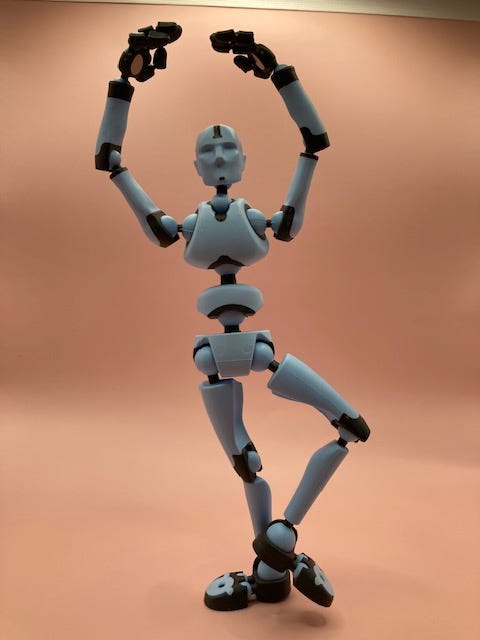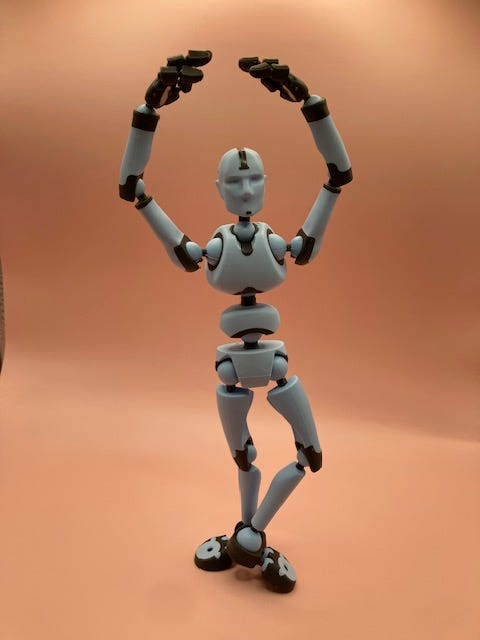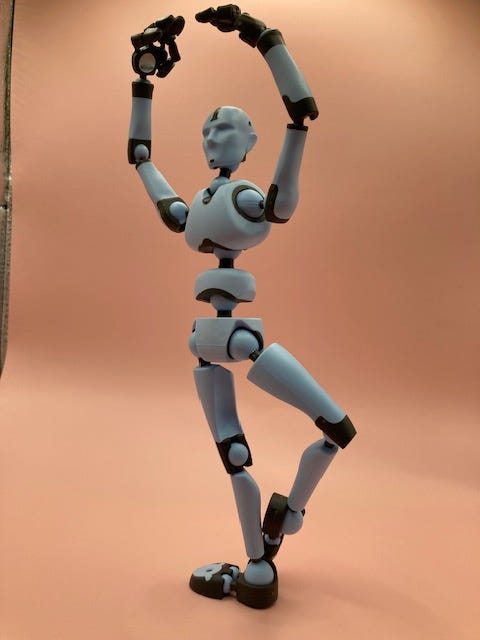French For Dancers
Demystifying dance terminology and steps for dancers and dance-lovers!
Issue 9: Frappé
Bonjour! Welcome to French For Dancers!
Each newsletter, we will look at a dance term, its pronunciation, meaning, use. Often, different dance techniques will use varying terminology for the same step, so I will try to include those, too.
This week, we look at Frappé.
Parlez-Vous Ballet?
(Do you speak Ballet?)
FRAPPÉ
(frah-pay)
Frappé comes from the French frapper (verb), which means to strike or to hit. Frappé is the adjective, meaning struck. It is a quick, dynamic movement.
Frappés are done in two ways, either from a flexed position (Cecchetti & RAD) or a pointed one (Vaganova & Balanchine). Either way, the working foot begins at the ankle – the working knee is bent – and extends quickly out to a straightened leg and pointed foot in a dégagé position. The working leg holds briefly, then returns quickly to the ankle.
When done with a flexed foot, the working foot begins flexed, with the heel resting in front or behind the supporting ankle. The ball and toes of the working foot brush the ground as the leg extends to a pointed position on its way out, but the foot does not touch the ground on the return movement.
When done with a pointed foot, the working foot begins at the ankle in coupé front or back, or sur le cou-de-pied (on the ankle). In the Balanchine style, as the leg extends in frappé, the working foot stays pointed but brushes the bottom of the toes on the way out (not the top of the toes - that hurts a LOT!). Other teachers/methods may have the pointed frappé brush out without touching the ground. Either way, it should not be a large upward movement like a ballonné but should aim down and out in a sharp, striking movement.
Frappés are usually performed as a fundamental barre exercise, and help strengthen the legs (especially quadriceps, hamstrings, and calves) while working on precision. They can be done to the front, side, or back, or in an en croix combination.
They are an excellent preparation for petit allegro (small and quick) jumps, such as jetés and assemblés, and help develop the speed and strength needed for beats.
Savoir-Faire
(Know-How)
Student Tip:
Break down the elements of the frappé into placement, brush, and extension to practice in each direction (front, side, back). Be especially careful on the back ones – avoid scooping the working foot like you’re digging a hole, and instead brush or skim the floor with the ball of the foot and the big toe.
Once you have the basics down, you can add speed, height, and doubles (more on that next week!).
Teacher Tip:
My bias leans towards teaching the flexed-foot frappé first, and then using the pointed foot version once students have mastered that and are ready for a new challenge. It’s important for students to grasp the concept of brushing through the floor as they will need this for center petit allegro. I also like the mechanics of moving from a flexed foot to a pointed one as a tool to develop strength and flexibility in the foot and ankle.
Frappés in relevé (risen, on the toes) are a good challenge for more advanced students as they require good core strength to stay aligned over the standing leg while the working leg moves through the combination.
À La Carte
(From the Menu)
Recommendations, reflections, and/or useful links
I recently came across a quote from American Ballet Theatre principal dancer Misty Copeland which speaks to the hard work of creating the illusion of ease that dancers (and many athletes) project:
I’m not sure if this was from an interview, or if it was in one of her books. But this quote has stuck with me as I’ve binged a decent amount of Olympic coverage in the past two weeks. Scores of athletes performing feats of gravity, dexterity, speed, and sheer willpower – while we can see muscles, sweat, and the physical demands of their respective sports, there’s also a certain quality of brilliance, precision, mental fierceness, and sometimes a splash of magic that makes it look effortless for a few seconds.
If you’re interested in reading Misty Copeland’s books, I enjoyed Life in Motion: An Unlikely Ballerina; her follow-up The Wind at My Back: Resilience, Grace, and Other Gifts from My Mentor, Raven Wilkinson awaits its turn in my “to be read” pile. She also has several other books, including children’s books.
Merci!
(Thank you!)
Thank you for reading this newsletter! If you have friends who might enjoy this, please share the link with them!
- Peggy








Naturally- we’re Balanchine enthusiasts 😉
One of my ❤️ barre exercises! I’ve been waiting for this one 🥰
📚recommendations, etc as enticing as always…next up ☕️& virtual promenade off to audible 😉
Merci, Miss Peg 💝